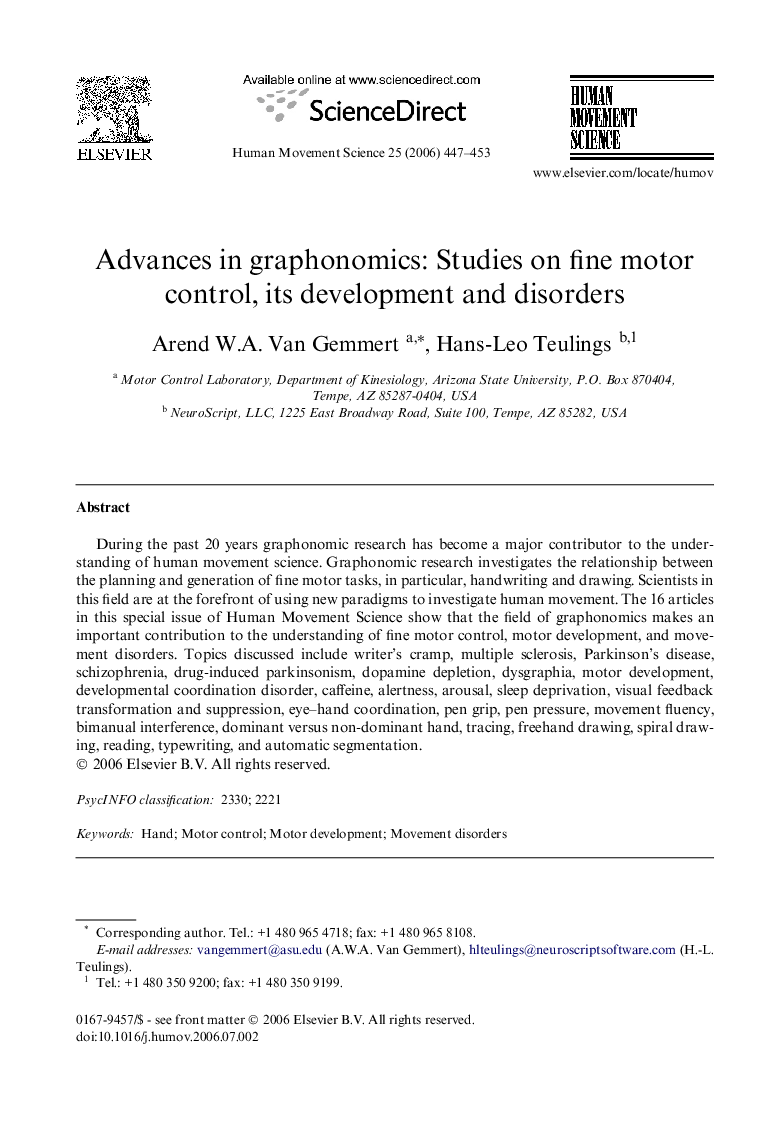| کد مقاله | کد نشریه | سال انتشار | مقاله انگلیسی | نسخه تمام متن |
|---|---|---|---|---|
| 928916 | 1474234 | 2006 | 7 صفحه PDF | دانلود رایگان |

During the past 20 years graphonomic research has become a major contributor to the understanding of human movement science. Graphonomic research investigates the relationship between the planning and generation of fine motor tasks, in particular, handwriting and drawing. Scientists in this field are at the forefront of using new paradigms to investigate human movement. The 16 articles in this special issue of Human Movement Science show that the field of graphonomics makes an important contribution to the understanding of fine motor control, motor development, and movement disorders. Topics discussed include writer’s cramp, multiple sclerosis, Parkinson’s disease, schizophrenia, drug-induced parkinsonism, dopamine depletion, dysgraphia, motor development, developmental coordination disorder, caffeine, alertness, arousal, sleep deprivation, visual feedback transformation and suppression, eye–hand coordination, pen grip, pen pressure, movement fluency, bimanual interference, dominant versus non-dominant hand, tracing, freehand drawing, spiral drawing, reading, typewriting, and automatic segmentation.
Journal: Human Movement Science - Volume 25, Issues 4–5, October 2006, Pages 447–453